Are you tired of struggling to find your tools in a dimly lit garage? Do you wish you had better lighting for your DIY projects or hobbies? If so, then you’ve come to the right place! In this blog post, we will provide DIY installation tips for garage lighting so you can transform your space into a well-lit and safe environment. With our expert advice, you’ll be able to tackle any project with ease and confidence.
Installing proper lighting in your garage is not only essential for your projects, but it also plays a crucial role in ensuring your safety. Insufficient lighting can lead to accidents and injuries, so it’s essential to make sure your garage is well-lit at all times. Whether working on your car, doing woodworking, or needing better visibility, the proper lighting can make a difference.
Regarding DIY installation, there are a few key things to consider. First and foremost, you must determine the lighting type that best suits your needs. LED lights are popular due to their energy efficiency, long lifespan, and bright illumination. They are also easy to install and require minimal maintenance.
Next, you need to plan the layout and placement of your lights. It’s essential to have a balanced and even light distribution in your garage to avoid shadows and dark spots. Consider utilizing different types of lighting fixtures, such as overhead lights, task lights, and under cabinet lights, to create the perfect ambiance for your workspace.
Lastly, don’t forget to prioritize safety during the installation process. Turn off the power supply before working on the electrical connections, and always follow the manufacturer’s instructions. If you’re not confident in your electrical skills, it’s best to consult a professional to ensure a safe and reliable lighting system in your garage.
So, what are you waiting for? With these DIY installation tips for garage lighting, you can transform your dark and cluttered garage into a well-lit and organized space. Say goodbye to fumbling in the dark and hello to a brighter and safer workspace. Get ready to take on your projects confidently and enjoy the benefits of a well-lit garage!
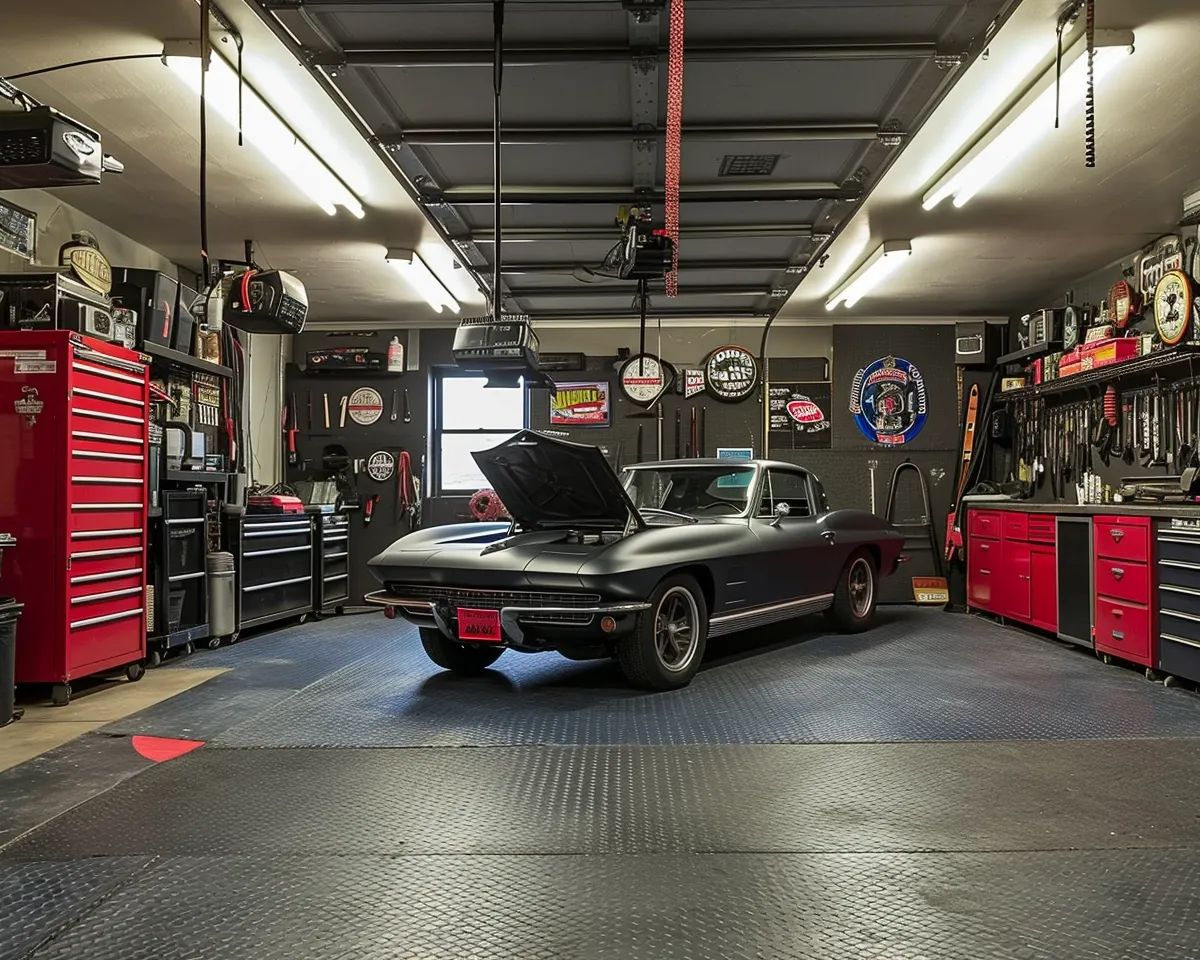
Planning Your Garage Lighting
When it comes to upgrading your garage lighting, proper planning is essential to ensure optimal results. By carefully considering your lighting needs and making informed choices, you can create a well-lit and functional space that meets your requirements. Here are some DIY installation tips to help you plan your garage lighting project:
Determining Your Lighting Needs
Assessing your specific needs is essential before you begin installing your garage lighting. Ask yourself questions such as:
– How will I be using my garage? Will it primarily be used for parking vehicles, as a workshop, or for storage?
– Do I need bright overall lighting or specific task lighting for certain areas?
– Will I require additional features like motion sensors or dimming options?
Understanding your lighting needs will guide you in choosing the right fixtures and placement to ensure maximum functionality.
Choosing the Right Light Fixtures
Next, you must select the appropriate light fixtures for your garage. Several options are available, including fluorescent, LED, and incandescent lights. Consider the following factors when making your decision:
– Energy efficiency: LED lights are the most energy-efficient option, while fluorescent lights are also greener than incandescent bulbs.
– Brightness and color temperature: Determine the desired brightness and color temperature level that will best suit your needs.
– Durability: Garage lighting fixtures should withstand dust, moisture, and temperature fluctuations.
Calculating the Total Lighting Load
Before installing your garage lighting, it’s crucial to determine the total lighting load. This calculation helps ensure that your electrical circuit can handle the power required by your lighting fixtures. Add up the wattage of all the bulbs you plan to install and check that it does not exceed the rating of the circuit.
Preparing the Electrical Wiring
Safety should always be a priority when working with electrical wiring. Turn off the power source to the garage before you begin any installation or wiring work. Carefully plan the routing of your electrical cables, ensuring they are hidden or securely fastened.
Installing the Lighting Fixtures
Follow the manufacturer’s instructions to install your selected light fixtures securely. Ensure they are positioned at the proper height and angle to provide adequate lighting coverage. Use support and anchoring methods, such as ceiling mounts or track systems, to ensure stability.
Connecting the Wiring
Once the light fixtures are installed, connect the wiring according to the manufacturer’s instructions. Use proper wire connectors and insulation techniques to prevent any electrical hazards. Double-check all connections to ensure they are secure.
Testing and Adjusting the Lights
Before finishing your garage lighting installation, test the lights to ensure they function correctly. Make any necessary adjustments to the placement or alignment of the fixtures to achieve the desired lighting effect and coverage.
Considering Safety Measures
Lastly, consider implementing safety measures to protect yourself and others in your garage. Install smoke detectors, fire extinguishers, and GFCI outlets to minimize the risk of accidents or electrical hazards.
Following these DIY installation tips, you can successfully plan and install your garage lighting to create a well-lit, safe workspace or storage area. Remember to prioritize safety and consult a professional if you’re uncertain about electrical work. You’ll enjoy a brighter and more functional garage with the proper lighting setup.
Determining Your Lighting Needs
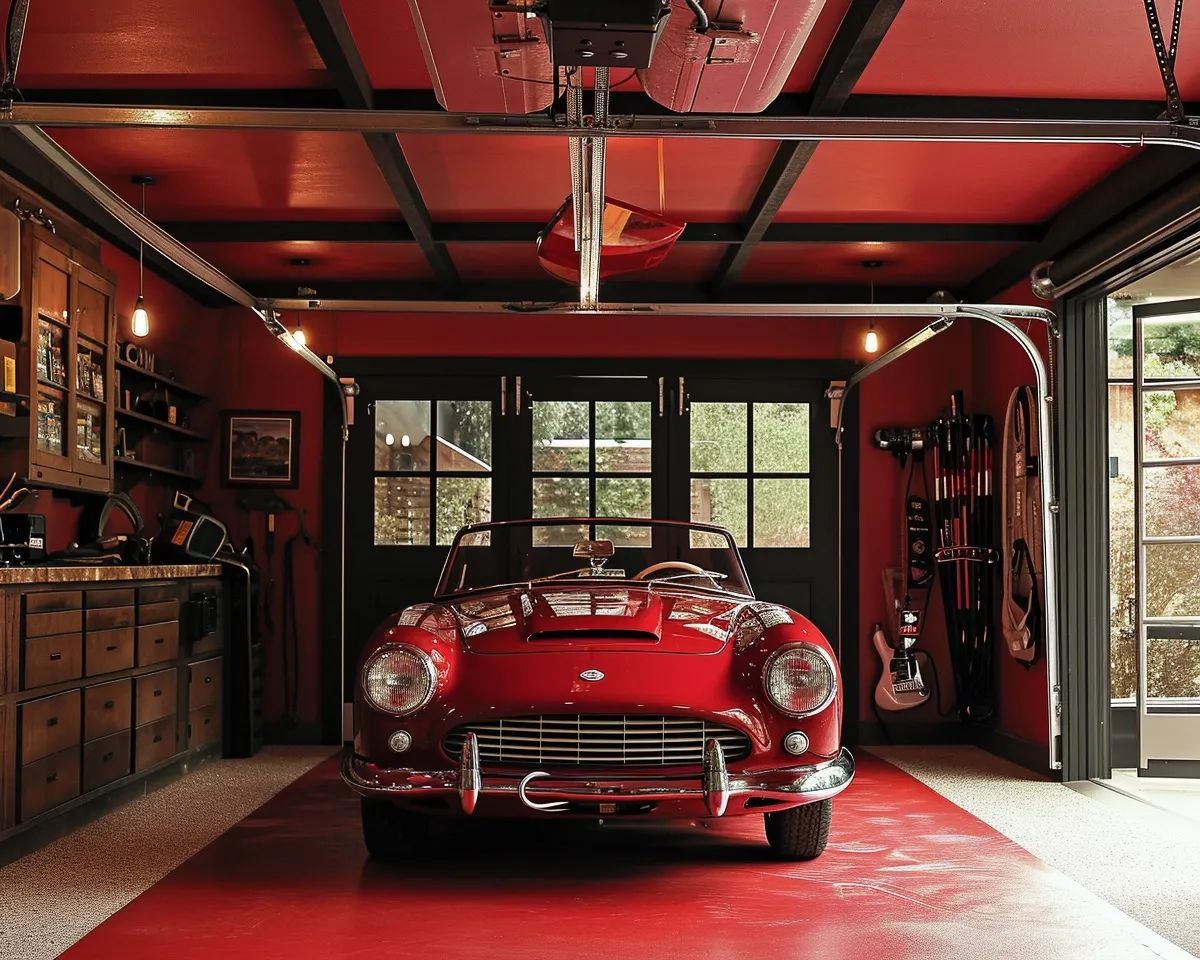
When installing garage lighting, determining your specific lighting needs is one of the first steps. Understanding the purpose and function of your garage will help you choose the right type and amount of lighting fixtures. Here are some key factors to consider:
The Size and Layout of Your Garage
Take note of the size and layout of your garage. Consider the dimensions, ceiling height, and the overall space available for lighting installation. This will help you determine how many fixtures you need and where they should be placed for optimal illumination.
Your Garage’s Primary Functions
Think about the primary functions of your garage. Is it a space for parking your cars, or is it a workshop or storage area? Understanding how you use your garage will help you identify the areas that require the most lighting, such as workbenches or tool storage areas.
The Level of Brightness You Desire
Decide on the level of brightness you need for your garage. If you primarily use your garage during the day, you may want to focus on maximizing natural light. On the other hand, if you work in your garage during nighttime hours or prefer a well-lit space, you may need additional artificial lighting.
The Type of Lighting Fixture
Consider the type of lighting fixture that suits your needs. Various options include overhead fluorescent lights, LED fixtures, and track lighting. Each type has advantages and disadvantages, so exploring what best fits your preferences and budget is essential.
Energy Efficiency
Another aspect to keep in mind is energy efficiency. Opt for energy-efficient lighting fixtures to save on electricity costs and minimize environmental impact. LED lights, for example, are known for their longevity, low energy consumption, and bright illumination.
Considering these factors, you can determine your garage lighting needs and make informed decisions when choosing the right fixtures and lighting system. Planning and assessing your requirements will result in a well-lit, functional, and safe garage space.
Choosing the Right Light Fixtures
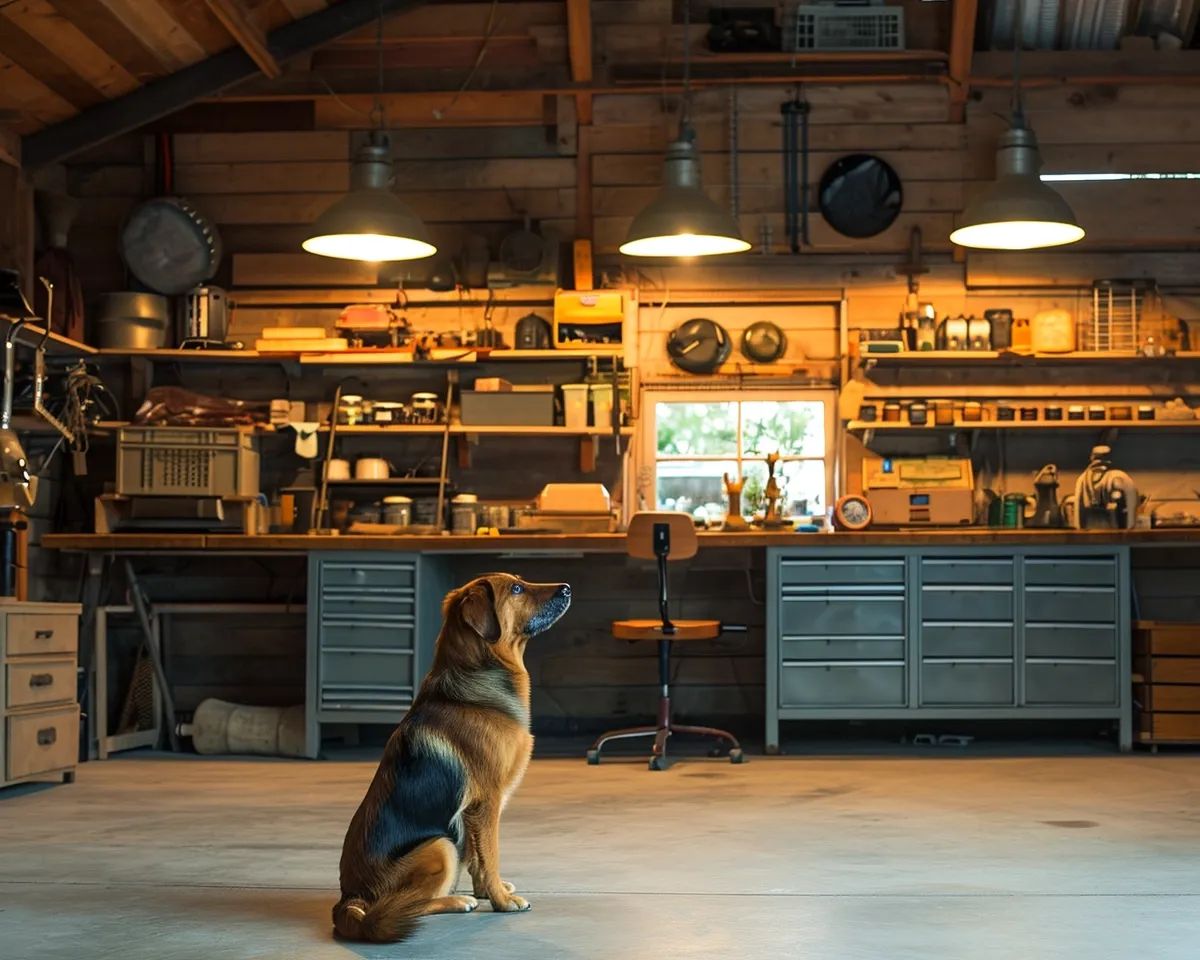
When it comes to garage lighting, choosing the right light fixtures is crucial for achieving the perfect balance of functionality, safety, and aesthetic appeal. With the wide variety of options available on the market, it can be overwhelming to make the right choice. To help you with this decision, here are some factors to consider when selecting light fixtures for your garage:
Lighting Type:
The first step is determining the lighting type that best suits your needs. There are three main types to consider:
- Overhead Lighting: Ideal for providing general illumination across the entire garage space.
- Task Lighting: Designed to provide focused lighting in specific areas, such as workbenches or tool storage areas.
- Accent Lighting: Used to highlight certain features or objects, such as decorative car displays or artwork.
Light Output:
Consider the amount of light output or brightness required for your garage. This will depend on the activities and space size you plan to undertake. It’s essential to balance having enough light to work comfortably and avoiding excessive glare that could strain your eyes.
Energy Efficiency:
In today’s environmentally-conscious world, energy efficiency is an essential factor to consider. Look for light fixtures that are ENERGY STAR certified or use LED bulbs. LED lighting is energy-efficient and long-lasting, saving you money on energy bills and replacement costs in the long run.
Installation Ease:
Consider the ease of installation before purchasing your light fixtures. Opt for fixtures with clear installation instructions or those you can easily install yourself. This will save you time, effort, and potential costs for hiring a professional electrician.
Durability and Safety:
Since garages can be harsh environments with temperature fluctuations and potential exposure to moisture and chemicals, it’s important to choose light fixtures that are durable and suitable for these conditions. Look for fixtures with high-quality construction and appropriate safety certifications.
Considering these factors, you can make an informed decision and select the right light fixtures for your garage that meet your requirements. Remember, having proper lighting in your garage enhances visibility and safety and creates a more enjoyable and functional space for all your activities.
Calculating the Total Lighting Load
When installing garage lighting, one crucial step is calculating the total lighting load. This determines how much electrical power your lighting system will require, ensuring you won’t overload your circuit and cause electrical problems. Here are some DIY tips to help you calculate the total lighting load accurately:
Gather the Required Information
You’ll need to gather some essential information about your light fixtures. This includes the wattage of each bulb or lamp and the number of fixtures you plan to install. You can find this information on the packaging or product labels. Make sure to list down all the details, as this will help you with the calculations.
Calculate the Fixture Load
The next step is to determine the fixture load. Multiply the wattage of each bulb by the number of bulbs in each fixture. For example, if you have four fixtures with two 60-watt bulbs each, the fixture load would be 4 x (2 x 60) = 480 watts. Repeat this calculation for all your fixtures and add up the results.
Account for Additional Loads
Don’t forget to account for any additional loads in your garage, such as power tools, appliances, or other electrical devices. These loads will also contribute to the total electrical demand on the circuit. Please make a separate list of these loads and their wattages.
Sum Up the Total Load
Add up the total wattage of your lighting fixtures and all other additional loads to obtain the total lighting load. It’s crucial to ensure that this total load does not exceed the circuit capacity you’ll be using. If needed, consult your circuit breaker’s amperage rating or seek advice from a qualified electrician to confirm if your circuit can handle the load.
Consider LED Lighting
If you’re concerned about the load on your circuit or wish to minimize energy consumption, consider using LED lighting. LED bulbs are highly energy-efficient and produce less heat than traditional incandescent bulbs. They also have a longer lifespan and can provide ample illumination without power.
You can ensure a safe and efficient garage lighting installation by carefully calculating the total lighting load and choosing the right light fixtures. Take your time, double-check your calculations, and don’t hesitate to seek professional assistance if needed. With these DIY tips, you’ll be well on your way to creating a well-lit and functional garage space.
Preparing the Electrical Wiring
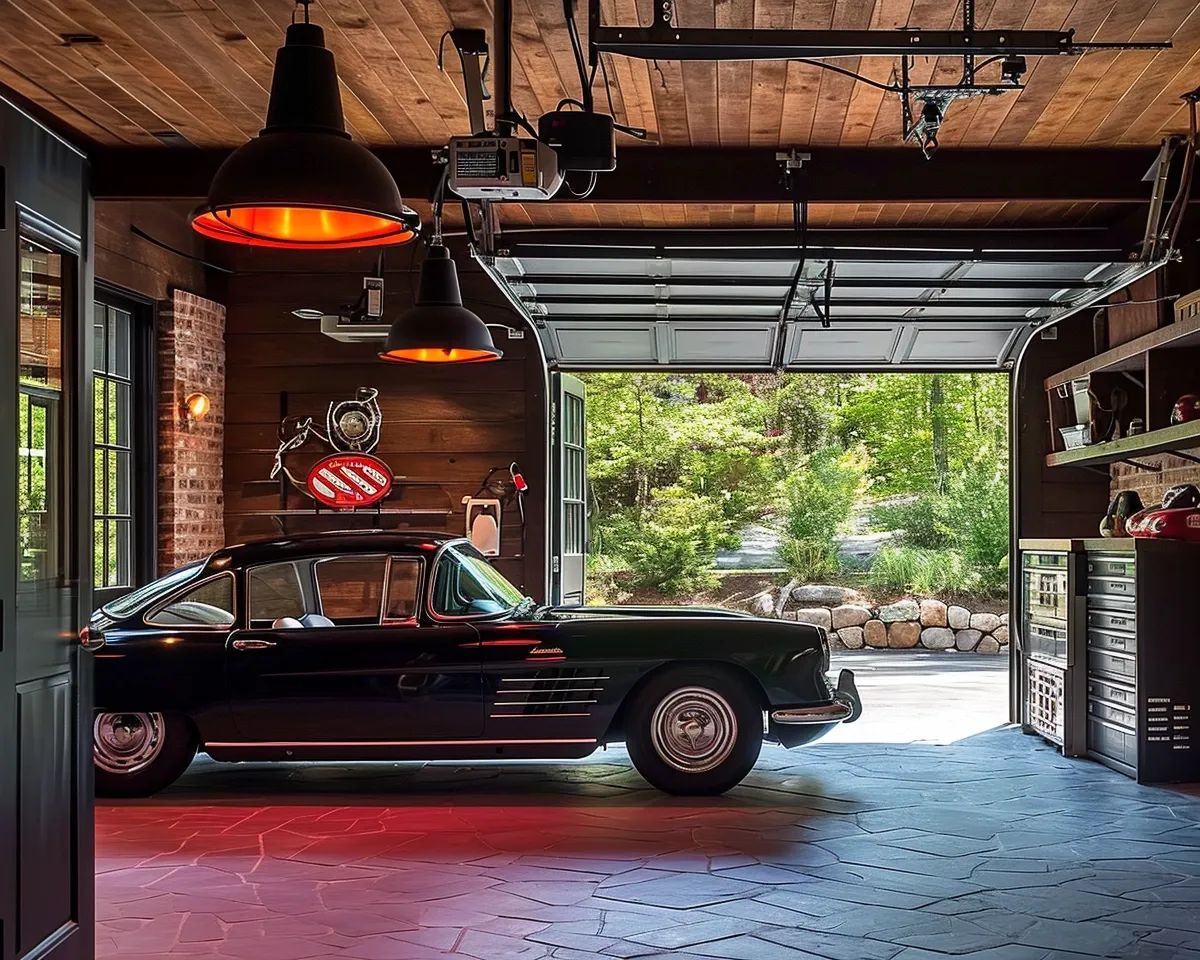
When it comes to installing garage lighting, ensuring proper electrical wiring is crucial for your lighting system’s functionality and safety. Following a few steps, you can easily prepare the electrical wiring for your garage lighting installation.
Step 1: Turning off the Power Source
Before working on the electrical wiring, turn off the power source to your garage. Locate the circuit breaker that controls your garage and switch it off to avoid any electrical accidents or injuries. Additionally, using a voltage tester to double-check that the power is indeed off is a good idea.
Step 2: Gathering the Necessary Tools and Materials
Next, gather all the tools and materials needed for the wiring process. This may include wire cutters, wire strippers, electrical tape, wire nuts, and a screwdriver. Everything on hand will make the process more efficient and help you avoid delays.
Step 3: Planning the Wiring Layout
Before you start running wires, plan out the layout for your garage lighting system. Consider the locations of the light fixtures, switches, and outlets. Sketching a diagram or creating a layout plan will help you visualize the wiring path and ensure you have enough wiring to connect all the necessary components.
Step 4: Installing the Wiring
Now, it’s time to run the wiring. If needed, start by drilling holes through the walls or ceiling to create a pathway for the wires. Carefully feed the wires through these holes, ensuring they are adequately secured and tucked away to prevent potential hazards.
Quick Tip: It’s always a good idea to use an electrical conduit to protect the wires and give them an extra layer of safety.
Step 5: Connecting the Wires
Once the wiring is in place, it’s time to connect the wires. Using wire nuts or connectors, join the corresponding wires in each fixture or switch box. Follow the manufacturer’s instructions and guidelines to ensure a secure and proper connection.
Step 6: Testing and Adjusting
After the connections are made, testing and adjusting the lights is crucial before finalizing the installation. Turn the power back on and check if the lights function as intended. If any adjustments need to be made, now is the time.
Quick Tip: Consider using a circuit tester to ensure the electrical connections are correct and safe.
Following these DIY installation tips for garage lighting and adequately preparing the electrical wiring, you can enjoy a well-lit and safe garage environment. Remember always to prioritize safety and consult a professional electrician if you are unsure about any aspect of the installation process.
Turning off the Power Source
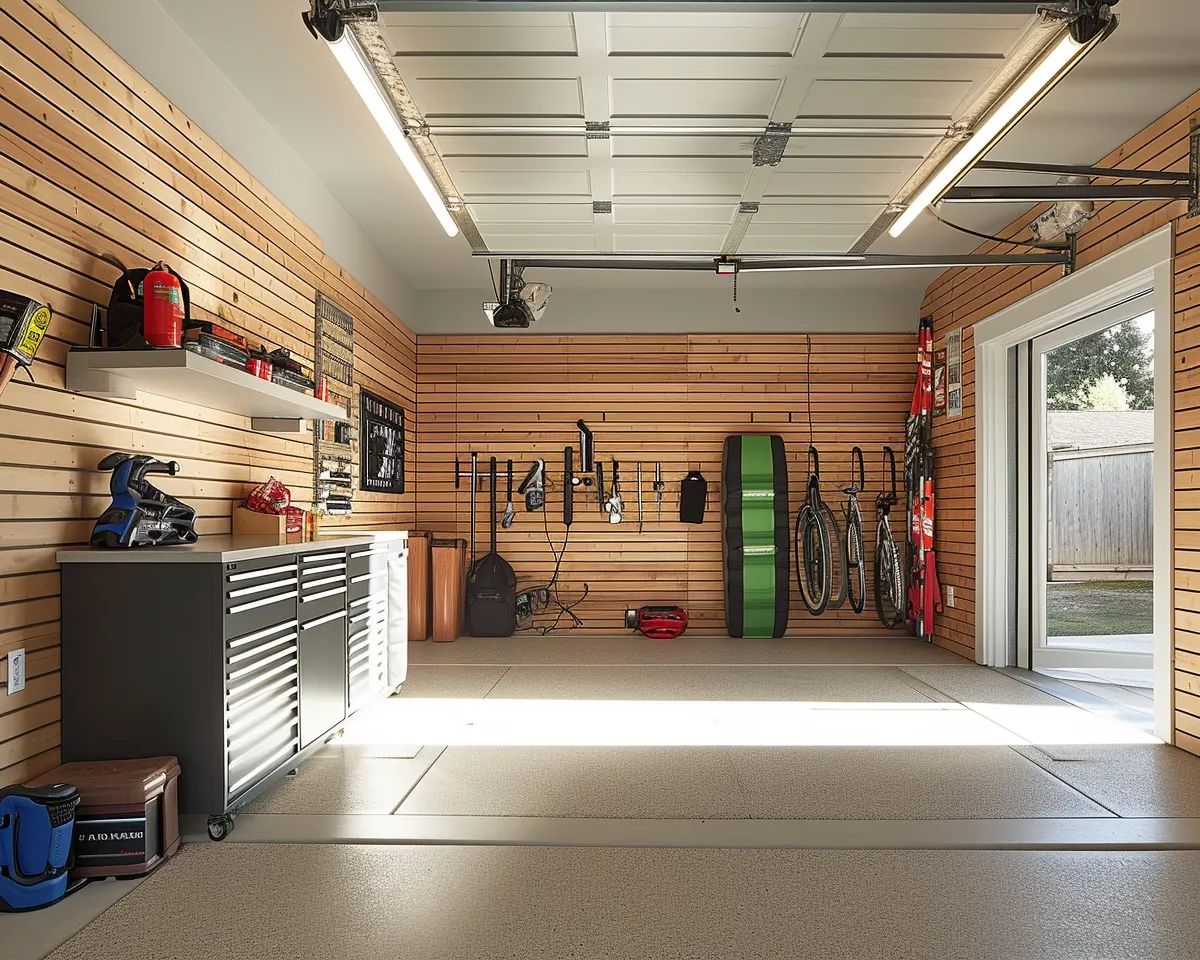
Before you begin the installation process for your indoor garage lighting, it’s crucial to turn off the power source in your garage. This step is essential for your safety and to avoid any potential electrical accidents.
Here are a few DIY tips to help you turn off the power source:
- Locate the electrical panel: In most homes, the electrical panel is usually found in the garage or basement. It is a metal box with a series of switches or circuit breakers. Take a moment to locate the panel.
- Identify the correct breaker: Look for the breaker that corresponds to the power supply of your garage. It might be labeled as “garage” or “lights.” If you are uncertain, you can switch off the main breaker to be on the safe side.
- Turn off the breaker: To turn off the breaker, flip the switch to the “off” position. You may hear a click sound to indicate that the power has been successfully turned off.
- Double-check the power: To ensure the power has been completely disconnected, test a working light or plug socket in your garage to see if it turns off. Return to the electrical panel and recheck the breaker if it remains on.
Remember that safety should always be your top priority when working with electricity. If you are uncomfortable or unsure about turning off the power source, it is highly recommended to consult a licensed electrician for assistance.
Turning off the power source minimizes the risk of electrocution or accidental electrical shocks while working on your garage lighting installation. This precautionary step ensures you can work confidently and safely, giving you peace of mind.
Now that you have turned off the power, you are ready to proceed with installing your indoor garage lighting.
Installing the Lighting Fixtures
So, you have planned your garage lighting, determined your lighting needs, chosen the right light fixtures, calculated the total lighting load, prepared the electrical wiring, and turned off the power source. The next step is to install the lighting fixtures themselves. Here are some DIY installation tips to help you with this final stage of the process:
Gather the necessary tools and materials
Before you begin installing the lighting fixtures, make sure you have all the required tools and materials on hand. This may include a ladder, wire strippers, wire connectors, a screwdriver, and the lighting fixtures themselves. Having everything ready beforehand will save you time and prevent unnecessary interruptions during the installation.
Follow the manufacturer’s instructions.
Each lighting fixture may have specific installation instructions provided by the manufacturer. Reading and following these instructions is essential carefully to ensure proper installation. The instructions will guide you on how to mount the fixtures securely, where to connect the wires and any additional steps or precautions you need to take.
Securely mount the fixtures.
Use the appropriate hardware to mount the lighting fixtures to the ceiling or wall securely. Ensure that they are correctly aligned and leveled. If necessary, ask for assistance to hold the fixture in place while you secure it.
Connect the wiring
Carefully connect the electrical wiring according to the manufacturer’s instructions. Strip the ends of the wires if needed and connect them using wire connectors. Ensure the connections are tight and secure to prevent any loose wires that could be a safety hazard.
Test and adjust the lights
Once the wiring is connected, please turn on the power source and test each lighting fixture to ensure it works properly. If necessary, adjust the angle or position of the fixtures to achieve the desired lighting effect. Don’t forget to follow safety precautions when working with electricity.
Safety should always be a top priority when installing garage lighting fixtures. If you are unsure about any step of the installation process, it is best to consult a professional electrician who can ensure a safe and proper installation.
Following these DIY installation tips, you can successfully install your garage lighting fixtures and create a bright and functional space. Now that you have completed the installation, it’s time to step back and admire your well-lit garage. Happy lighting!
Connecting the Wiring
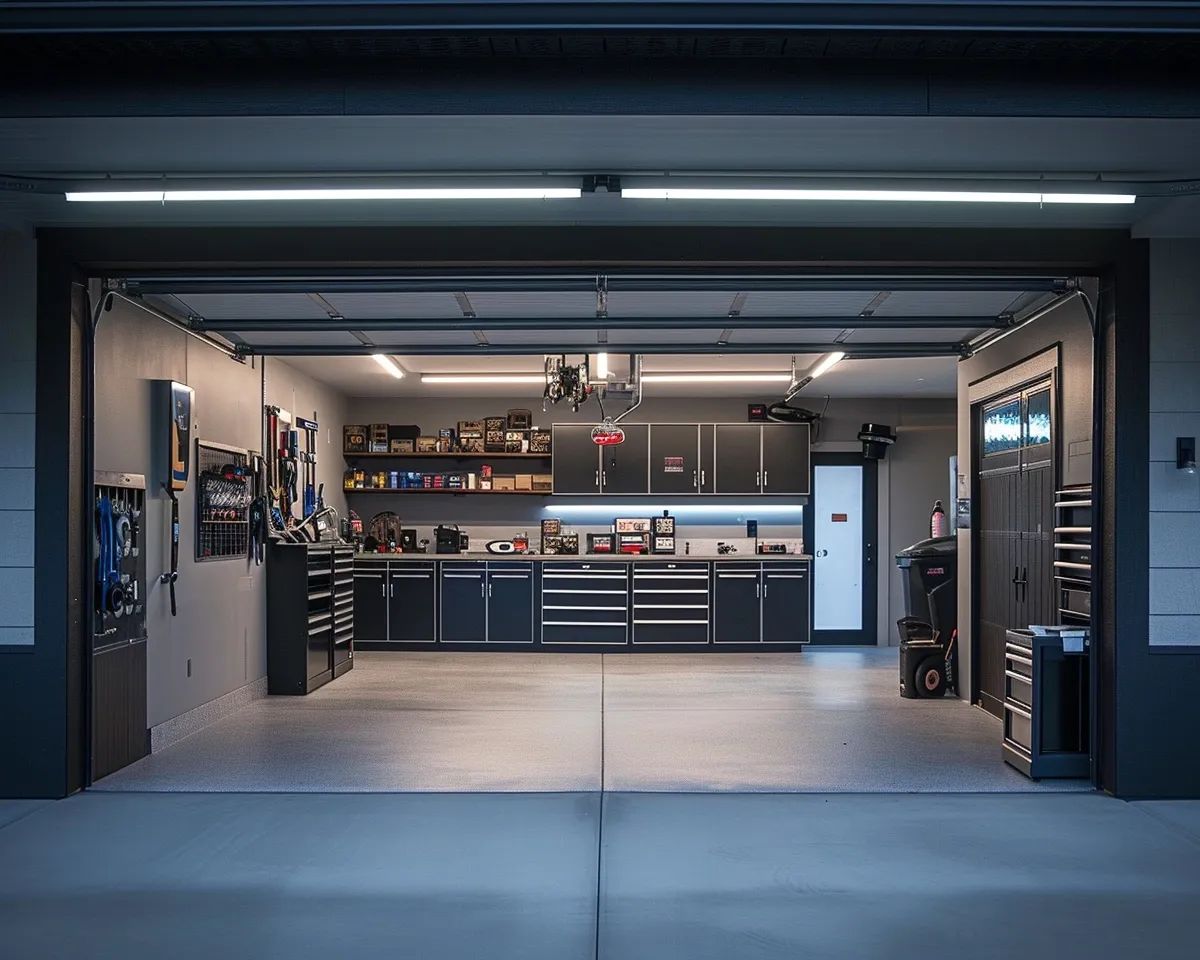
Now that you have selected and installed your garage lighting fixtures, it is time to connect the wiring. Properly connecting the wiring is crucial for ensuring the functionality and safety of your indoor garage lighting system. Follow these DIY installation tips to complete this step with ease:
Gather the necessary materials
Before you begin, gather all the materials you need to connect the wiring. This includes wire connectors, electrical tape, wire strippers, and a voltage tester. Having everything ready beforehand will help streamline the installation process.
Prepare the wiring connections.
Start by stripping the insulation from the ends of the wires that will be connected. Use wire strippers to remove about half an inch of insulation from each wire. This will expose the metal conductors, allowing for a secure connection.
Make the wire connections.
Using wire connectors, join the corresponding wires together. This typically involves connecting the black (or hot) wires, white (or neutral) wires, and bare copper or green (or ground) wires. Twist the cables clockwise and place the wire connectors over them, ensuring a tight and secure connection.
Secure the wire connections.
After making the wire connections, wrap electrical tape around each wire connector to secure the connection further and prevent any exposed wires. This step is essential for maintaining the safety and longevity of your garage lighting system. Double-check that all connections are properly secured.
Test the electrical connections.
Before turning the power back on, use a voltage tester to confirm that all the wiring connections are correct and there are no electrical faults. This ensures your garage lighting system is connected correctly and ready to use.
Remember always to prioritize safety throughout the installation process. Make sure the power source is turned off, and if you are unsure or uncomfortable with any step, consult a professional electrician for assistance.
Following these DIY installation tips, you can connect the wiring for your indoor garage lighting system. With your new lights, your garage will become a well-lit and functional space for all your activities and projects.
Testing and Adjusting the Lights
Now that you have successfully installed your garage lighting fixtures and connected the wiring, it’s time to test and adjust the lights to ensure they work correctly and provide adequate illumination. Follow these DIY installation tips for garage lighting to ensure a well-lit and functional workspace in your indoor garage:
Turn on the Power
Before testing the lights, ensure you have turned the power back on at the electrical panel. This will supply electricity to the lighting fixtures and allow you to test them.
Check for Proper Functionality
Turn on each lighting fixture one by one and check if they are functioning as expected. Look for flickering, dimness, or other issues indicating a faulty connection or bulb. If you encounter any problems, double-check the wiring connections and replace faulty bulbs.
Adjust the Direction and Angle
Garage lighting fixtures often come with adjustable heads or arms, allowing you to direct the light where needed most. Take the time to adjust the direction and angle of the lights to ensure optimal illumination for different areas of your garage. This will help eliminate any dark spots or shadows.
Consider Light Color and Temperature
The color and temperature of the light emitted by your garage lighting fixtures can also make a difference in the functionality of your workspace. Consider the nature of your tasks in the garage and choose lighting with the appropriate color and temperature. For example, a neutral white light is often preferred for overall visibility, while a warmer light may be more suitable for a relaxed atmosphere.
Install Dimmer Switches
If you want flexibility in adjusting the brightness of your garage lighting, consider installing dimmer switches. Dimmer switches allow you to customize the intensity of the light according to your needs, providing a more comfortable and energy-efficient lighting solution.
In conclusion, testing and adjusting your garage lighting is a crucial step in the installation process. Following these DIY installation tips, you can ensure your lights function correctly, provide sufficient illumination, and meet your specific requirements. Taking the time to fine-tune your garage lighting will result in a better overall lighting experience in your indoor garage.
Considering Safety Measures
When installing garage lighting, ensuring safety should be your top priority. Taking the necessary precautions will protect you from potential hazards and help you avoid electrical mishaps. Here are some essential safety measures to consider before and during the installation process:
Educate Yourself
Before starting any DIY project, it’s crucial to have a basic understanding of electrical systems. Familiarize yourself with the types of wires, circuit breakers, and electrical codes specific to your area. This knowledge will help you make informed decisions throughout the installation process and reduce the risk of accidents.
Turn off the Power
Always turn off the primary power source before working on any electrical project. This will prevent the flow of electricity and keep you safe from potential shocks. Use a voltage tester to double-check that the power is switched off before beginning any work.
Use Proper Safety Gear
Donning the proper safety gear is essential when dealing with electricity. Wear safety goggles to protect your eyes from debris and potential sparks. Additionally, wearing insulated gloves and non-conductive footwear will help minimize the risk of electric shock.
Handle Lighting Fixtures with Care
While installing light fixtures in your garage, handling them with care is essential. Ensure that you use the correct bulbs for the fixtures and that they are installed securely. Use caution while handling sharp tools or climbing ladders to avoid accidental injury.
Take Fire Safety Precautions
Garages often contain flammable materials such as gasoline, paint, or solvents. Avoid installing lighting fixtures near these hazardous substances to minimize the fire risk. Opt for LED or fluorescent bulbs that emit less heat and reduce the chance of accidental combustion.
Check for Overloading
Before installing multiple lighting fixtures, consider the capacity of your electrical system. Overloading your circuits can lead to overheating and potential fire hazards. Calculate the total lighting load and ensure it falls within the recommended limits to maintain electrical safety.
Remember, if you are uncertain about any aspect of the installation process or lack experience in electrical work, it’s always best to consult a professional electrician. They will ensure your garage lighting is installed correctly, adhere to all safety standards, and provide valuable guidance to prevent electrical mishaps.
By following these safety measures, you can confidently undertake your garage lighting installation and create a well-lit, safe environment for all your projects. Prioritizing safety will protect you and your loved ones and ensure the longevity and efficiency of your lighting system.
Common Mistakes to Avoid
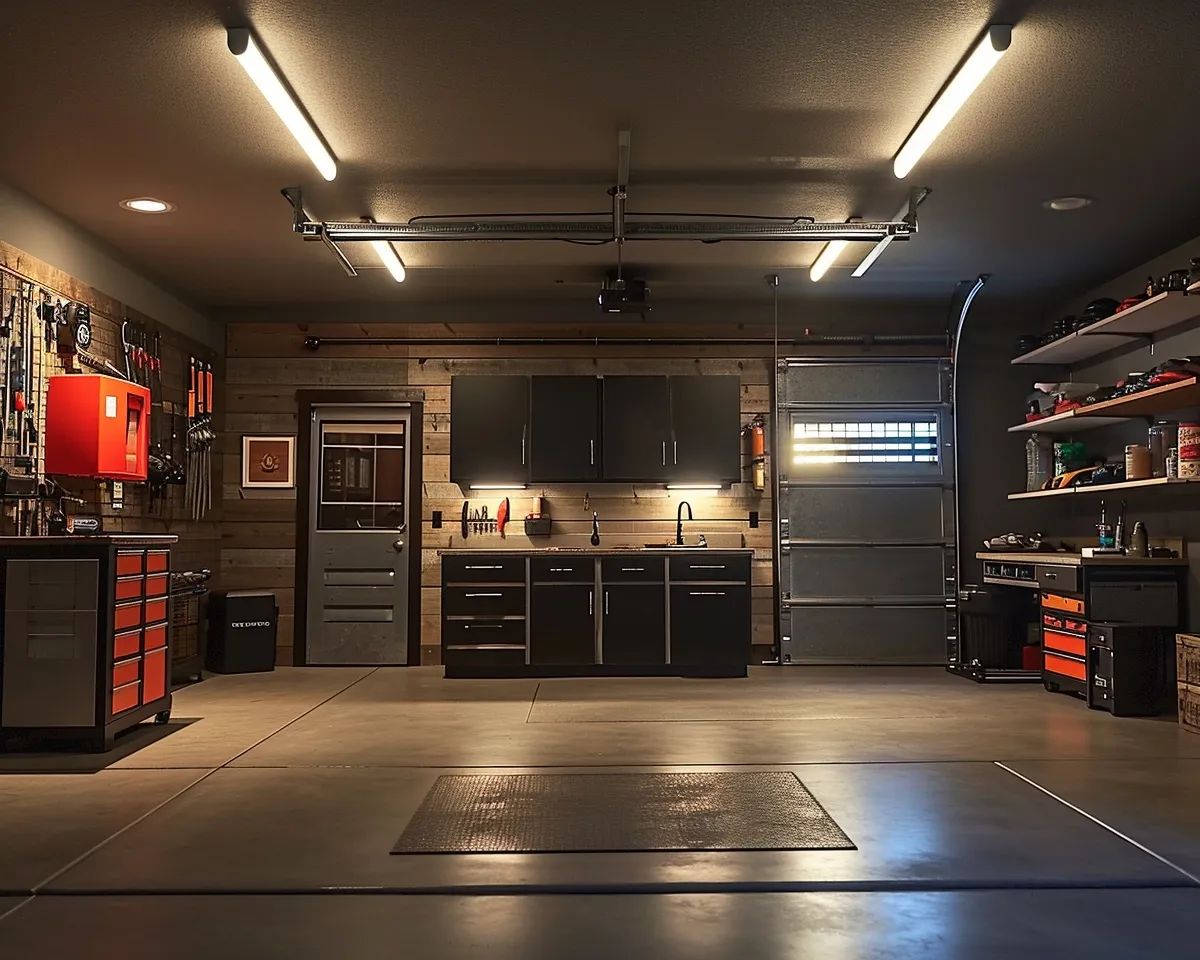
Ignoring the Electrical Load
One common mistake DIYers make when installing garage lighting is ignoring the electrical load. It’s essential to calculate the total lighting load and ensure that it is within the capacity of your electrical system. Overloading the electrical circuit can lead to tripped breakers, flickering lights, and electrical fires. Always check the wattage of the light fixtures you plan to install and ensure it doesn’t exceed the circuit’s capacity.
Incorrect Wiring Connections
Another mistake to avoid is making incorrect wiring connections. Improperly connecting the wires can lead to electrical hazards and cause malfunctions in your lighting system. Always follow the manufacturer’s instructions when connecting the wiring, and use wire connectors or electrical tape to secure the connections correctly. If you are unsure how to make the connections, it’s best to consult a licensed electrician.
Neglecting Safety Measures
Ensuring electrical safety should be a top priority when installing garage lighting. Neglecting safety measures can put you at risk of electrical shocks or accidents. Here are a few safety tips to keep in mind:
- Turn off the power source before starting any installation or wiring work.
- Use proper personal protective equipment (PPE), such as gloves and goggles.
- Avoid working in wet conditions or with wet hands.
- Keep flammable materials away from electrical components.
Poor Placement of Light Fixtures
Placing your light fixtures is crucial in ensuring adequate lighting in your garage. Avoid placing the fixtures too close to each other, as it can create unwanted shadows and uneven illumination. On the other hand, placing them too far apart can result in dark corners and inadequate lighting. Take the time to strategically plan the placement of your light fixtures, considering your garage’s size and layout.
Disregarding Energy Efficiency
Installing energy-efficient light fixtures in your garage can help you save on utility bills in the long run. Don’t make the mistake of disregarding energy efficiency when choosing your lighting options. Consider using LED bulbs, which consume less energy and have a longer lifespan than traditional incandescent bulbs. LED fixtures may have a higher upfront cost, but the energy savings and durability make them a worthwhile investment.
By avoiding these common mistakes when installing garage lighting, you can ensure a safe and efficient lighting system that meets your needs. Always prioritize electrical safety and consult a professional if you’re unsure about any aspect of the installation process.
Maintaining Your Garage Lighting System
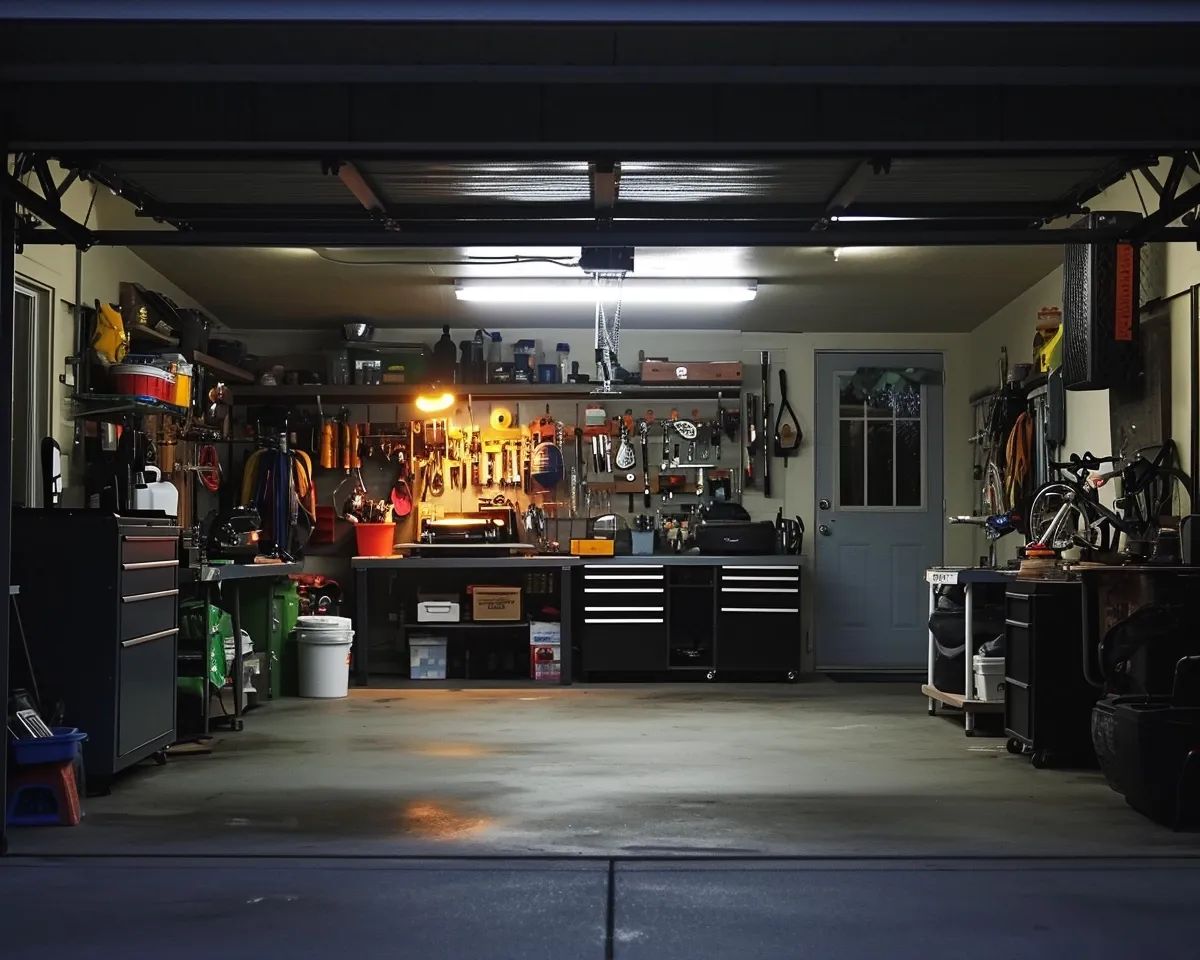
Importance of Regular Maintenance
Once you have successfully installed your garage lighting system, it is essential to prioritize regular maintenance to ensure optimal performance and longevity. A well-maintained lighting system enhances safety and provides a pleasant and functional environment for all your projects and activities.
Cleaning and Dusting
Over time, dust, dirt, and debris can accumulate on your light fixtures, diminishing their brightness and effectiveness. To maintain optimal lighting conditions, make it a habit to clean your fixtures periodically. Use a soft cloth or a duster to remove any dust or dirt that has settled on the surfaces. If necessary, gently wipe the fixtures with a mild cleaning solution and ensure they are scorched before turning the power back on.
Inspecting Wiring and Connections
Regularly inspect the wiring and connections of your garage lighting system to identify any signs of wear, damage, or loose connections. Faulty wiring can lead to flickering lights, power surges, or fire hazards. Take the time to carefully examine all wiring and connections, checking for any frayed cords or loose connections. If you notice any issues, replace damaged wiring or consult a professional electrician.
Replacing Bulbs and Ballasts
Over time, light bulbs and ballasts can wear out, resulting in reduced light output and increased energy consumption. Make it a routine to replace burnt-out bulbs promptly and upgrade to energy-efficient LED bulbs for improved performance and energy savings. Additionally, if you notice malfunctioning ballasts, such as flickering lights or a buzzing sound, consider replacing them to optimize your lighting system’s functionality.
Upgrading to Smart Lighting
If you want to take your garage lighting system to the next level, consider upgrading to innovative lighting technology. Bright lighting allows you to control and adjust your lights remotely, set schedules, and even integrate with other smart home devices. With features like motion sensors and dimming capabilities, bright lighting enhances convenience and reduces energy consumption.
Bullet Points Recap:
- Regular cleaning and dusting of light fixtures
- Inspecting wiring and connections for damage or wear
- Promptly replacing burnt-out bulbs and malfunctioning ballasts
- Consider upgrading to intelligent lighting for added convenience and energy efficiency
Implementing these maintenance tips ensures that your garage lighting system remains in top condition for years. Regular maintenance enhances the longevity of your lighting fixtures and ensures a well-lit and safe environment for all your garage activities.
Conclusion
Installing proper lighting in your garage is a functional upgrade and a safety essential. Whether you’re a DIY enthusiast or a seasoned home improvement expert, following these DIY tips for garage lighting installation will help you brighten up your space and keep it safe.
First and foremost, always prioritize safety. Ensure that the power supply is switched off before you begin any electrical work. If you’re not confident handling electrical connections, hiring a licensed electrician is best to assist you. Remember to use safety glasses, gloves, and appropriate tools when working with electricity.
Before choosing the type of lighting for your garage, consider the activities that will take place in the space. Bright task lighting should be a priority if you use your garage as a workshop. If it’s primarily for storage or parking, overhead lighting with motion sensors can be more practical.
Additionally, take advantage of natural light by installing windows or skylights. This reduces your reliance on artificial lighting during the day and improves the overall ambiance of the space.
When positioning your lights, aim for even illumination throughout the garage. Strategically place light fixtures to eliminate shadows and dark corners. For optimal lighting, consider installing LED lights, which consume less energy and have a longer lifespan compared to traditional bulbs.
Ultimately, investing time and effort in proper garage lighting installation will make a difference in functionality and safety. Following these DIY tips and prioritizing safety will transform your garage into a well-lit space that enhances productivity and ensures a secure environment for all your activities.
Frequently Asked Questions (FAQs)
Frequently Asked Questions about DIY Installation Tips for Garage Lighting
Q: Can I install garage lighting myself?
A: Yes, you can install garage lighting yourself. However, if you are unfamiliar with electrical work, hiring a licensed electrician for maximum safety is recommended.
Q: What type of lighting is best for a garage?
A: LED lights are the best choice for garage lighting. They are energy-efficient, provide bright illumination, and have a long lifespan.
Q: How many lights do I need for my garage?
A: The number of lights you need depends on the size and layout of your garage. As a general guideline, aim for at least one light every 4-6 feet for optimal visibility.
Q: Can I use regular light bulbs in my garage?
A: While you can use regular incandescent or fluorescent bulbs, they are less efficient or long-lasting than LED bulbs. LED bulbs are the recommended option for garage lighting.
Q: What is the ideal brightness for garage lights?
A: The ideal brightness for garage lights is around 5,000-7,000 lumens. This ensures sufficient illumination for various tasks and enhances overall visibility in the space.
Q: Are there any safety precautions to consider during installation?
A: Yes, safety is paramount during installation. Make sure to turn off the power to the garage, use appropriate safety gear (e.g., gloves), and follow proper wiring techniques to prevent electrical hazards.